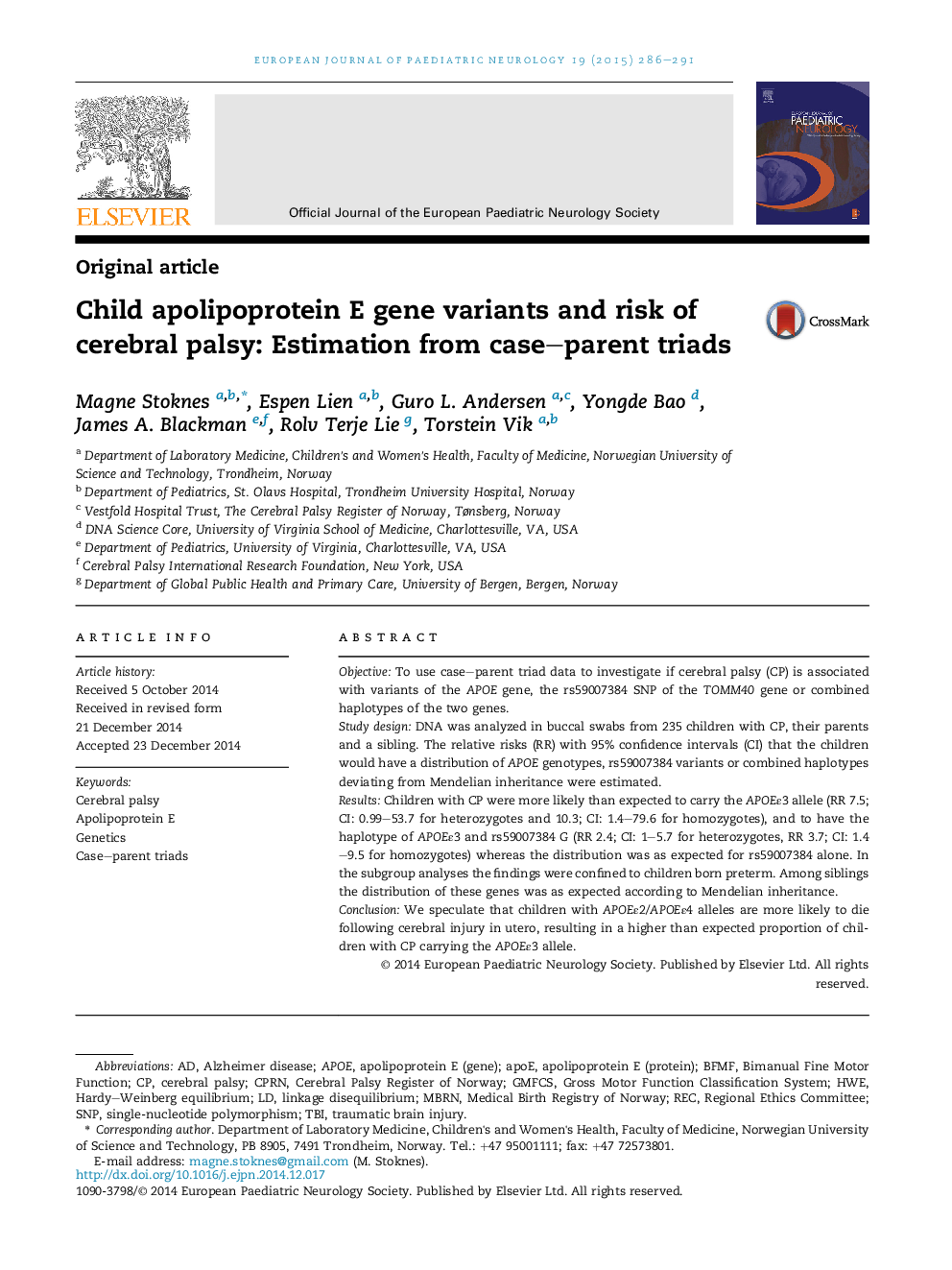| Article ID | Journal | Published Year | Pages | File Type |
|---|---|---|---|---|
| 3053704 | European Journal of Paediatric Neurology | 2015 | 6 Pages |
ObjectiveTo use case–parent triad data to investigate if cerebral palsy (CP) is associated with variants of the APOE gene, the rs59007384 SNP of the TOMM40 gene or combined haplotypes of the two genes.Study designDNA was analyzed in buccal swabs from 235 children with CP, their parents and a sibling. The relative risks (RR) with 95% confidence intervals (CI) that the children would have a distribution of APOE genotypes, rs59007384 variants or combined haplotypes deviating from Mendelian inheritance were estimated.ResultsChildren with CP were more likely than expected to carry the APOEε3 allele (RR 7.5; CI: 0.99–53.7 for heterozygotes and 10.3; CI: 1.4–79.6 for homozygotes), and to have the haplotype of APOEε3 and rs59007384 G (RR 2.4; CI: 1–5.7 for heterozygotes, RR 3.7; CI: 1.4–9.5 for homozygotes) whereas the distribution was as expected for rs59007384 alone. In the subgroup analyses the findings were confined to children born preterm. Among siblings the distribution of these genes was as expected according to Mendelian inheritance.ConclusionWe speculate that children with APOEε2/APOEε4 alleles are more likely to die following cerebral injury in utero, resulting in a higher than expected proportion of children with CP carrying the APOEε3 allele.
